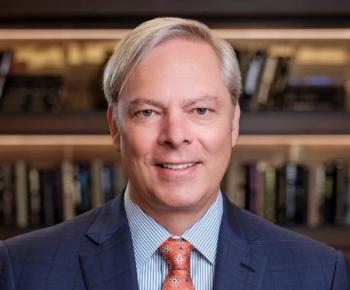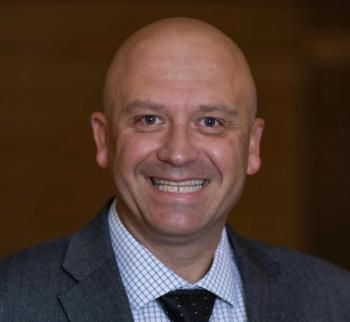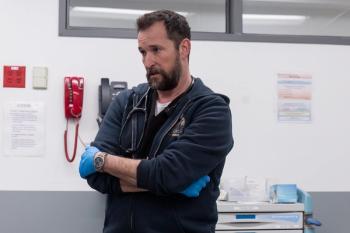
University of Texas Medical Branch president makes big moves
After becoming president in August, Jochen Reiser led a reorganization and is now CEO of the UTMB Health System. He talked with us about his plans to transform the organization.
Jochen Reiser hasn’t wasted any time since his arrival in Texas.
In August, Reiser took on his new role as president of the University of Texas Medical Branch. Earlier this month, Reiser unveiled a sweeping reorganization, including taking over as CEO of the UTMB Health System.
Reiser has ambitious plans to transform the organization. He brings significant experience in academic medicine, serving as chairman of the department of internal medicine at Rush University Medical Center in Chicago. He also had stints at the University of Miami and at Harvard Medical School.
He tells Chief Healthcare Executive® that his previous academic experience has informed his plans at UTMB. Reiser says he wants UTMB to succeed in all facets of the organization.
“If I ever were to come in charge of something, I want to make sure that all the missions are equally valued, and create an administrative model that follows those patterns,” Reiser says.
UTMB’s four pillars are the health system, education, research and innovation, he says.
“In order now to equally value all of them, we needed an administrative model, that is really more of a circle, that has equal representation of all of them,” he says.
In an interview with Chief Healthcare Executive, Reiser discusses the reorganization, the challenges ahead, serving the fast-growing Lone Star State, and how he’ll measure success. (See part of our conversation in this video. The story continues below.)
Reorganizing UTMB
With the new reorganization, “there are no winners and losers,” Reiser says. For example, the health system’s goals won’t come at the expense of education, he says.
Reiser says he thought about the right model for an academic medical center for a long time. Upon his arrival in Texas, he says he thought the new model would fit well.
As he thought through the transition, Reiser says, “I'm a physician scientist, I'm an innovator. I am the president. So I might as well take on the CEO role for the health system.”
Reiser says elevating physician leaders is a critical part of the reorganization. He named Vicente Resto as UTMB’s chief physician executive, and he will oversee the system’s clinic operations and surgical areas.
He tapped Salim Hayek, a cardiologist and medical director at the University of Michigan’s Frankel Cardiovascular Center Clinics, to join UTMB in early 2024 as chief transformation officer. And he’s bringing Vineet Gupta from Rush University, where he served as vice chair of innovation in internal medicine, to serve as UTMB’s vice president of innovation and technology development.
“My idea was to elevate physician leadership back up, because over the last two decades, there was certainly a shift of taking physicians more into the workforce, and having administrators really run the health system,” Reiser says. “And so we're kind of bringing this back.”
Still, Reiser is quick to point out the need for skilled administrators. In the restructuring, he named Wayne Keathley as the acting chief operating officer of the UTMB Health System. He previously served as president of Mount Sinai Hospital in New York. Reiser worked with Keathley at Rush for years.
The reorganization is also designed to make the UTMB system “very nimble when it comes to patient access,” Reiser says.
“The reality is that often, people or patients that can be more persistent with trying to get into a hospital system are ultimately often more successful in getting in or they can shop around. But not everybody has those means to do that,” Reiser says.
“By allowing everybody to come in easily, in the same way, we are able to hopefully turn most of the illnesses around and provide the best outcomes,” he adds.
Improving recruiting
Reiser says elevating more physician leaders will help in recruiting doctors and nurses to UTMB, enabling them to bring in top clinicians more quickly. With fierce competition for physicians and nurses, UTMB can’t afford to wait to fill vacancies. The previous structure made it more difficult to bring in talented candidates, he says.
"With the old model, these discussions could have been going on for a very, very long time, to a point where the candidate would have moved on to another institution," Reiser says.
“We are excited about this new model, because I think it sets us up in the best way to deal with increased costs, a shortage in labor, and also become more nimble and accountable, when we recruit, when we build the program,” Reiser says.
Reiser says he wants to reduce administrative and documentation burdens on clinicians that would allow them to focus more on patient care. He sees that as a critical element in retaining staff.
“We are making investments to run a more physician- and nursing-friendly hospital, where we really, hopefully allow our workforce to come back to why they went to nursing school and why they went to medical school,” Reiser says.
Reiser says he’s concerned about
“When a doctor has to do more documentation than the actual patient encounter, that is tiresome,” Reiser says. “When someone has to document after hours at home, and go back to the electronic medical record system and make adjustments, that's tiresome.
“So we need to bring technology and support into our hospitals and our facilities that allow our providers to do the job that they are trained to do and because that drives the satisfaction and the passion to stay in the game.”
Big and getting bigger
Texas has seen rapid growth in recent years. More than 30 million people now live in the Lone Star State, up from 25 million in 2010, according to the U.S. Census Bureau.
Reiser isn’t deterred by the state’s fast-growing population.
“I think this is a good problem to have for us,” Reiser says.
He says there’s “a lot of knowledge” along the Interstate 45 corridor, which runs from Galveston, UTMB’s home, up to Dallas. With employers ranging from the oil industry to NASA, Reiser sees opportunities for partnerships for UTMB.
As those communities continue to grow, Reiser sees the potential to deploy more primary care practices. He says he sees more growth “hopefully relatively fast,” going north to Houston.
“I’m more excited about Texas, and healthcare in Texas, than anywhere else,” he says.
Looking ahead
When asked about how he expects to define success in the coming years, Reiser says he’s looking to see continued growth along the Interstate 45 corridor.
He also says he wants UTMB to have a greater presence with the Texas Medical Center in Houston.
Reiser also says he wants to establish UTMB’s Galveston campus as a greater draw for patients, where he wants them to have an easier time accessing the healthcare system.
He also wants to create more opportunities for science-based companies. He pointed to a new biotech incubator, which had its grand opening Nov. 9. The incubator is designed to support early-stage life sciences companies.
“We are giving physicians and innovators a chance to go in a different sector. And that will drive different types of businesses for people living here on the island,” Reiser says.
Galveston is “a wonderful place to live,” he says, but he says there’s a need for better housing to attract young professionals.
“I’m excited about being part of building the community,” he says.
He also says he’s looking to work more extensively with UTMB’s supporters, including the Sealy & Smith Foundation and the Moody Foundation, among others.
Reiser says he wants to work with UTMB’s benefactors to “create a more intertwined presence of UTMB for this area, but also really for the entire state of Texas.”




























































































